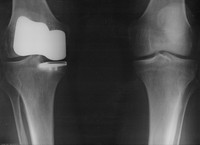
No medical disability insurance has no medical tests.
Disability insurance can be confusing for people who haven’t had time to look into all the different types of insurances. You may be questioning how does disability insurance work because it can get confusing. This is why no medical disability insurance is the perfect solution for those who want disability insurance, but fear they would be disqualified by medical circumstances.
Unlike no medical disability insurance, most disability insurance policies do require medical tests. In fact, disability insurance is generally more stringently underwritten than life insurance.
Even no medical disability insurance policies have much more comprehensive financial underwriting. The reason being, disability insurance benefit amounts are based on the insureds Income.
Someone earning $100,000 a year can qualify for a higher benefit amount than someone earning $50,000 a year. This is why disability insurance for doctors looks different from disability insurance for an average office worker.
The main difference between no medical disability insurance policies and traditional disability insurance policies is that the former has no medical tests and either no health questions, or short series of health questions.
Most no medical disability insurance policies are “Injury Only” plans, which means if the insured were to develop a disability due to an illness the plan would not pay out.
Also, the insured’s occupation will still have an impact on the premiums of no medical disability insurance plan. Lawyers have a better occupation class than landscapers and, subsequently, lawyers will pay a lower premium for their no medical disability insurance plan then a landscaper would.
Other variables that influence plan pricing are the elimination period, the benefit period and any riders on the plan.The elimination period refers to how long it will take until the disability insurance benefit is paid out. This is usually 30 days, 60 days or 90 days but some “Injury Only” plans will start paying a benefit from day one. The shorter the elimination however, the higher the premium.
Benefit periods are usually two years, five years, or until age 65, but some companies are now extending their disability benefit to age 70. The longer the benefit, the higher the monthly premium because the Insurance company has taken on risk over a longer term.
For example, a plan that pays $2000 a month, with a benefit period of two years, will pay out a maximum of $48,000 in the event of the disability, but a plan that pays $2000 a month, with a five-year benefit, will pay a maximum amount of $120,000, which anyone can see is a significant difference.
Other variables that can influence the price of a no medical disability insurance policy are the riders on the plan. No medical disability insurance riders can include a cost-of-living rider, which allows an insured’s disability benefit to keep in line with the cost of living, or a return-of-premium rider which provides for a partial or full return of premium if the insured does not make a claim.
Disability insurance is often overlooked, which in itself makes no sense when you consider that the likelihood of becoming disabled is much higher than the likelihood of passing away during a given period of time.
One of the reasons many consumers (and sadly brokers) ignore disability insurance is it can be complex. The definitions and provisions of the policy can be different from company to company, so it’s crucial that you work with a broker who understands how disability insurance works, as well as a broker who has experience working in the hard to insure market. Equally, if you’re new to being a broker or starting your own brokerage, as well as working with Leverate become an Introducing broker to ensure your professionalism is high, make sure that you understand disability insurance, as this is a market that needs attention. Each insurance company underwrites risk differently and this is especially true with disability insurance policies. Some companies may have a poor claim response when underwriting diabetics, while other companies may have a more favorable response.
Each situation is unique and requires a personalized approach. High-risk applicants may want to have their broker submit a cover letter with their application explaining their individual medical circumstances. Doing this helps the broker paint picture for the underwriter and personalizes the application during the underwriting process.



You’re touching on a very true issue. The complexity of disability insurance stifles not only clients, but sellers. Confidence and experience is key when it comes to these policies in order to make the buyer comfortable moving forward. It’s a crying shame when someone winds up with inferior insurance for their situation due to hesitation from uncharted territory.
Hi Daniel, Thanks for sharing you make some terrific points. If a broker feels overwhelmed on certain product he should align him or herself with another broker who is comfortable with this market.
Lots of good points mentioned here. You really need to watch out for exclusions with DI coverage.
Thanks Josh. You make a good point. Many no Medical Disability plans are limited to injury related disabilities. To get illness related coverage there will generally be more health questions and underwriting.